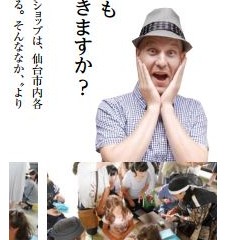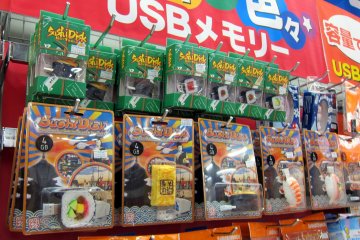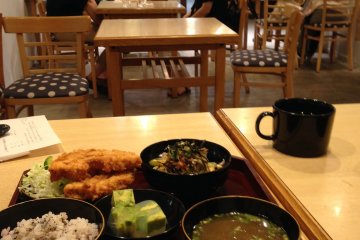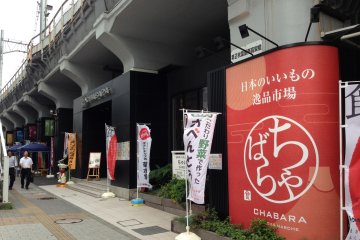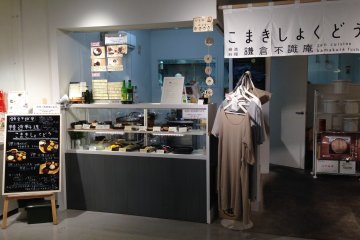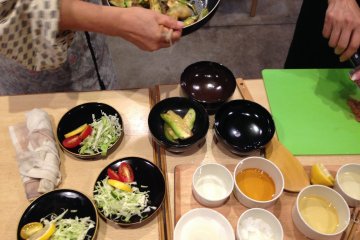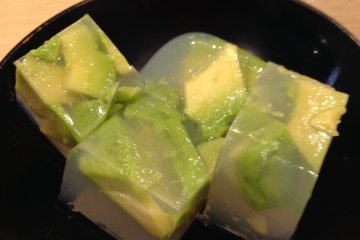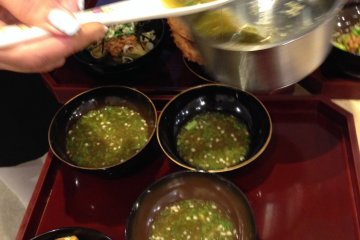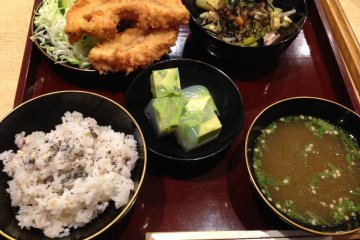Shojin ryouri, or vegetarian food eaten by Zen monks, has attracted a lot of attention overseas. At the same time however, Japanese people don't have many chances in their daily lives to enjoy it. Additionally, the opportunity to learn how to cook Zen cuisine outside the many temples of Kyoto is increasingly rare.
In recent years there has been a boom in the popularity of fermented and raw foods.The traditional and wonderful food style has again come to demand some of the spotlight. But Japanese food has always been popular, it is in fact registered as a world heritage asset. Therefore it isn't too much to say that the Japanese spirit traces itself back to its food. One aspect of this food phenomenon is Zen cuisine.
Kamakura Fushikian (Kamakura: the unknown retreat) sponsors a cooking classroom, but the cooking classes operate under the Komaki Shokudo (Komaki Cafeteria) name. The location is a 3 minute walk from JR Akihabara Station. Look for it under the elevated bridge between Akihabara Station and Okachimachi Station. It is inside a place called CHABARA, a collection of Japanese food shops. There isn't only Zen cuisine sets, onigiri rice balls, or rice bowl items, but there is even a cafe where you indulge in drinks and sweets. You can also purchase your choice of seasonings and ingredients for cooking.
The cooking classroom menu changes monthly. The changes parallel what the class's headquarters, Kamakura Fushikian, is training their staff to master. Instructor Fujii Mari was exposed to the Zen style of cooking through her late husband Soutetsu at the shojin ryouri cooking school Zenmikai (禅味会) in Inamuragasaki, a coastal area in Kamakura, Kanagawa Prefecture. The couple produced many cookbooks together with Mari Sensei also writing English versions.
I visited in July. That month's menu featured:
- minced okura
- fried egg plant with seared natto
- avocado agar gelatin
- fried kurumabu (車麩フライ), a type of fried bread
- assorted grains
Seasonings such as soy sauce, sake, mirin, and vinegar are readily available, as are seasonal vegetables to compliment the natto and kurumabu. Because it was the summer, cuisine items that require little heating time were on the menu. Simple cooking methods and recipes were introduced and we found ourselves eating within the hour. After that we sat in a group with the instructor, having conversations about various topics while enjoying our meals.
Shojin ryouri is a cornerstone of Japanese cuisine, and perhaps for that reason I felt a sense of nostalgia as I was eating. At the same time I think of how busy I am in daily life, and that I want to enjoy the nature of the seasons around us all. On the other hand, I question what is western or contemporary. It seemed with every bite of the traditional food, philosophic thoughts and new ways of thinking came to me. Furthermore my body's five senses felt like they had reset, and my whole body was in balance because of this experience.
Every month the cooking class is held once in Tokyo and 10 times close to Kamakura. Check out the schedule to easily select the classes you like. Also it seems the Kamakura cooking classroom can make a reservation with you in English. It could be great fun to invite those interested in Japanese cuisine or Buddhism.


